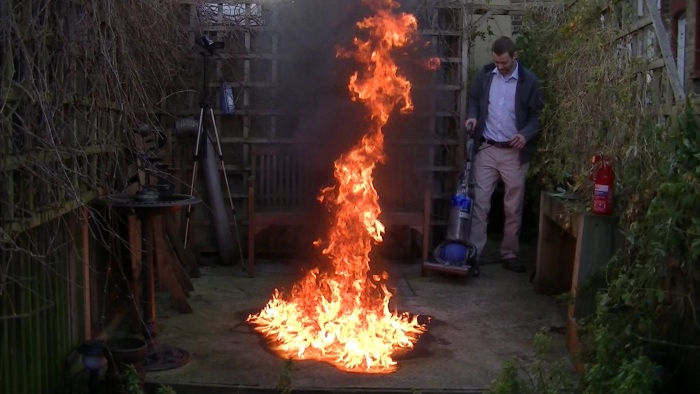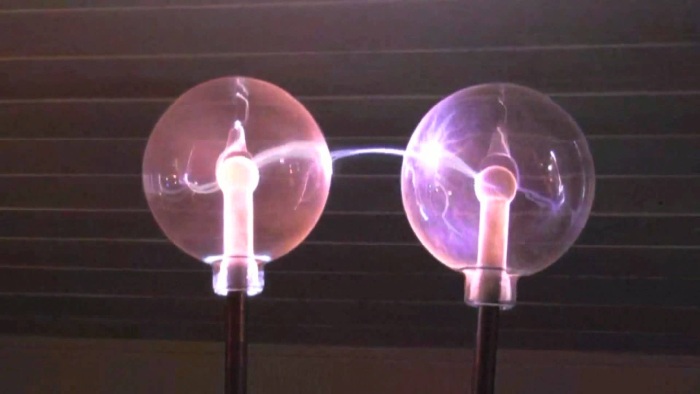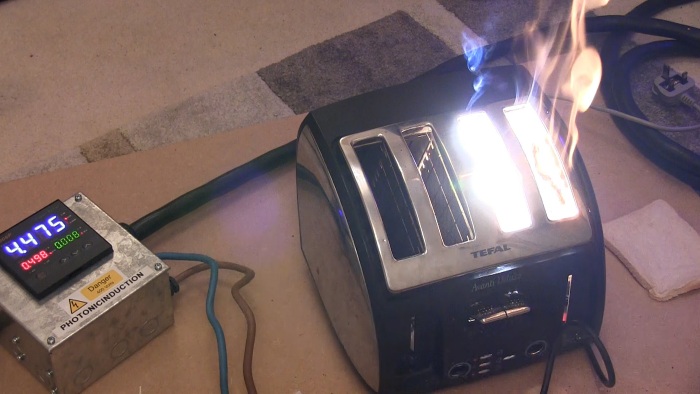The title says it all: while this particular type of hack might be tempting, it is HIGHLY recommended that all who read the following article do not try this trick at home.
Photonicinduction is a fairly popular channel on YouTube that features scientists with a pension for misusing and abusing electric and petrol-powered equipment. To date, they’ve covered everything from vacuuming up a gas fire to overloading a plasma ball with power:


The channel’s latest feature is the 10-second toaster and they achieved the impossible: they actually made watching bread convert to toast a fun and exciting event.

Here’s a quick recap of everything you’ll see in the video below. The guys started off with a 1,800-watt, four-slot toaster (so each side received 900 watts). The left side was “hacked”, if you will, to allow the Photonicinduction team to increase its power at will, while the right side more or less served as the control.
The first phase was meant to see if the power increase would even work: starting voltage was set at 295 with approximately 1.5 kilowatts. From there, the toaster was pushed up to 330 volts and 1.8 kilowatts. Using this much power, the bread achieve a full toasting in about one minute’s time.
For round two, the guys wanted to increase the power to see if they could get the bread to toast faster. Right before the start of the experiment, you can hear them say to push the power up to, and I quote, “stupid levels.” So this time the machine was driven straight up to 345 volts and 2.0 kilowatts of power, peaking at 347 during the toasting.
At this level, the bread achieved a full browning in 45 seconds.
For round three, the goal was to toast the bread in 30 seconds. Voltage was initially set to 360 volts / 2.2 kilowatts of power when, without explanation, power was increased again, sending the voltage reading to well over 400 volts, peaking at 409 and over the 2 kilowatt mark. A full toasting was achieved in less than 30 seconds, and by the time power was cut, there was some smoke being emitted from the bread.
While most people would be happy with a 30-second toaster, the guys at Photonicinduction were not done — they then decided they wanted toast in 10 seconds. Initial power went straight to 405 volts / 2+ kilowatts and after about 20 seconds or so, smoke started coming from the bread. Once removed, the bread showed signs of being fairly well burnt.
A second try was given at approximately 405 volts, 2.9 kilowatts, and after 10 seconds, the bread turned out well toasted.
After the guys ran out of bread, they decided to turn the toaster on and increase the power to see what would happen. At 465 volts and 3.7 kilowatts of power, the toaster itself began to smoke. At 480 volts and 3.9 kilowatts, it died out with a quick spark.
But this was only the left side of the toaster — the right “control” side was still usable; what’s more, it still had bread in it. After some quick rigging, the Photonicinduction guys turned the toaster on and flooded it with power. They hovered at 360 volts and 2.4 kilowatts for a few moments before going up to the 405 volt / 2.9 kilowatts mark. Power was cut off to check the status of the bread and sure enough, after 10 seconds, the bread was toasted.
One slice was then removed and the other left in for experimental purposes. Power was switched back on at the 410 volt / 3.0 kilowatt mark before hitting 465 volts and 3.8 kilowatts. It was at this point that the bread caught fire.

Naturally, the experiment did not stop there. With the bread slice fully engulfed in flames, power was increased yet again, hitting the 500 volts 4.5 kilowatts mark before the appliance finally called it quits and died off.
It was at this moment, roughly the 9:30 mark that time of death was declared for the toaster.
While this whole experiment might seem like a complete waste of money and perfectly good bread, it is actually fascinating to see how a normal, everyday kitchen appliance handles surges of power. The video itself does run a bit long (roughly 11 minutes), so if you’re in a rush and just want to catch some highlights, you can catch a bulk of it between the 2 and 9 minute marks.
Via YouTube
Advertisement
Learn more about Electronic Products Magazine





